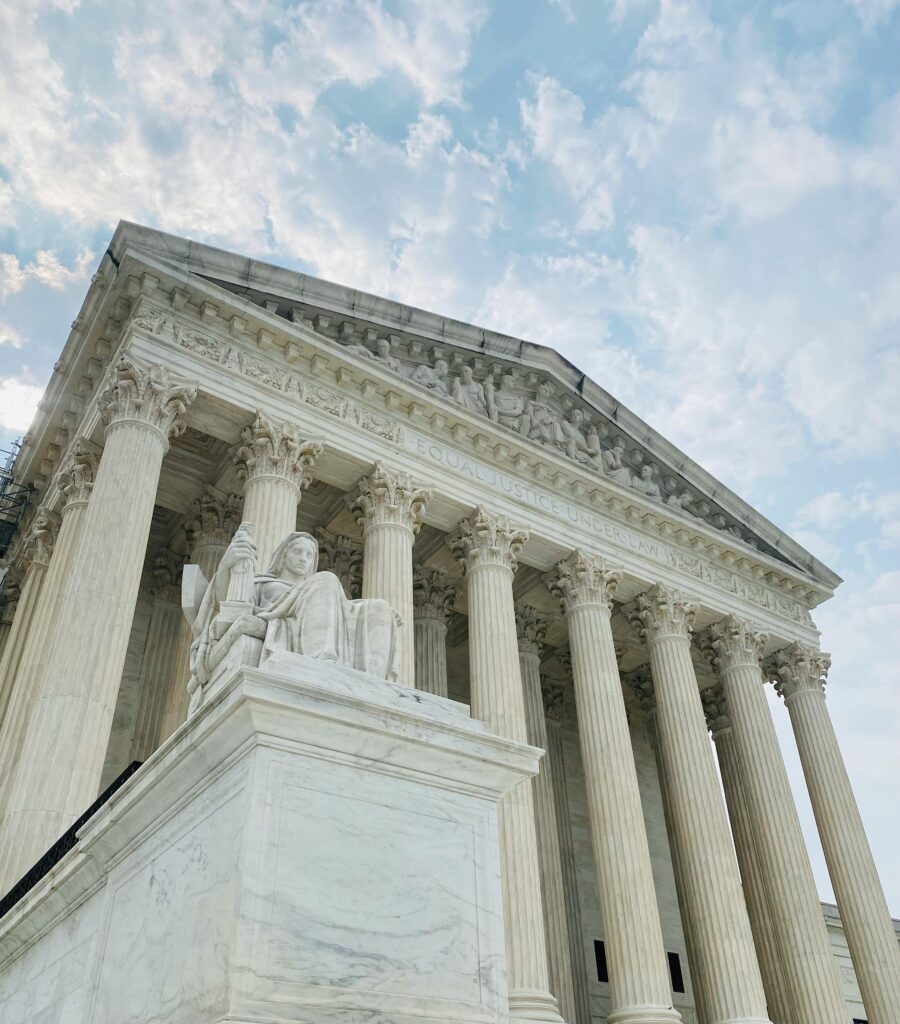Ocean advocacy groups have criticised the US Supreme Court for overturning the “Chevron doctrine,” under which federal courts would defer to an agency’s interpretation of ambiguous legal terms when Congress has given that agency authority to implement the law.
The Supreme Court in a 6-3 vote killed a legal precedent known as the “Chevron deference”.
The deference, set in 1984 in a case involving the oil giant, gave federal agencies wide powers to interpret laws and decide the best ways to apply them. In ending the deference, the court has severely weakened the powers of agencies including the Environmental Protection Agency.
Environmentalists fear that the decision could lead to hundreds of rules being weakened or eliminated, particularly Environmental Protection Agency limits on air and water pollution, regulations on toxic chemicals, and policies to tackle climate change.

The unravelling of the doctrine began in 2020, when the US Government began requiring herring fishers to cover the costs of taking federal monitors on fishing trips. The fishing vessels did not have a choice – it was illegal to fish without federal monitors on board to check on the Atlantic fishery, an area that extends from Maine to North Carolina. They previously didn’t pay for the monitors and the commercial fishing companies sued in two separate cases.
In response to the ruling, The Nature Conservancy issued the following statement: “The decisions are likely to present challenges to preserving the many decades of progress we have made in protecting people and the planet.”
Oceana’s Vice President for U.S. Oceans Beth Lowell had the following reaction: “This case was a fundamental attack by some in the fishing industry on responsible fisheries management in the United States. Some fishers want to operate in the dark, unmonitored, and return to a wild west of fishing in U.S. waters, but these companies are fishing on a public resource and making profits from the fish they are taking from OUR oceans. Without monitoring, limits become irrelevant, and rules become suggestions. Observers help prevent overfishing and rebuild fisheries, and now that may be at stake.
This decision shows that politically appointed judges could be making the final call instead of experts in government agencies. This puts at risk government decisions not just on fisheries, but also on clean water, clean air, public health, food safety, and protecting wildlife.”
Meredith Moore, Director of Ocean Conservancy’s Fish Conservation Program, issued the following statement:
“Today, the Supreme Court clearly showed that this case was never just about fish. Instead, New England’s Atlantic herring fishery was used as a Trojan Horse to attack the foundations of the public agencies that serve the American public and conserve our natural resources. The protections that keep our air and water clean, our homes and workplaces safe, and our communities, our children and ourselves healthy rely on the knowledge and experience of scientists and experts, and all that is now at risk.
“Decades ago, American fisheries were on the brink of collapse, and what made recovery possible – what kept fishing communities in business and seafood on American dining room tables – was strong science-based management decisions rooted in data. This case jeopardizes our access to critical information about America’s fisheries, which is the exact opposite of what we need to handle the fast-growing impacts of climate change.
“The Supreme Court’s decision opens the floodgates to litigation that will erode critical protections for people and the environment.”
Explainer: What is “Chevron deference,” and how does it work?
Chevron deference is the latitude federal judges give agencies over how to interpret the statutes they administer when a dispute arises. Some 40 years ago, the Supreme Court articulated a relatively simple two-part test, as explained by NRDC. First, the judges examine the wording and the context of the statute in question to see if Congress’s intent is clear. If it is, then the matter is settled: The agency is obliged to follow the letter of the law.
But if the statutory language is ambiguous—that is, if it has two or more reasonable interpretations—the reviewing court must defer to the agency’s choice in how to carry out the law. The idea behind such deference is that expert agencies, accountable to an elected president, are better suited than federal judges to make the policy choices that Congress left open.
The court decided in 1984 that judges should defer to federal agencies in interpreting ambiguous parts of statutes. The idea was that if Congress passes a law where something is unclear – or there is a “gap” – it is up to an agency to fill in the gap.
In practice, that gave arms of the federal government such as the Environmental Protection Agency the freedom to create and implement rules without fear of protracted legal battles.
Established by the Supreme Court’s ruling in Chevron U.S.A. v. Natural Resources Defense Council, this jurisprudential doctrine has underpinned U.S. administrative law since 1984.
Explainer: The case that overruled Chevron deference
The challenge taken up by the supreme court stems from two cases brought by herring fishermen, who balked at a policy requiring them to pay for the government overseers required onboard their ships to ensure against overfishing.
Loper Bright Enterprises v. Raimondo pitted the owners of a New England fishing company against a federal agency, the National Marine Fisheries Service (NMFS). The Magnuson-Stevens Act sets catch limits to help prevent overfishing and requires fishing boats to have a government-appointed inspector onboard to monitor compliance.
Fishing companies incur the cost of these monitors—in plaintiff Loper Bright’s case, about $700 a day—but the company argued that NMFS had no authority to force it to do so. A district court disagreed, reasoning that Congress left that question open for the agency to decide. Applying Chevron, the court deferred to NMFS’s choice that the boat owner should pay. A federal appeals court affirmed this decision.
The plaintiffs then appealed to the Supreme Court, which in May 2023 announced that it would take up the case.